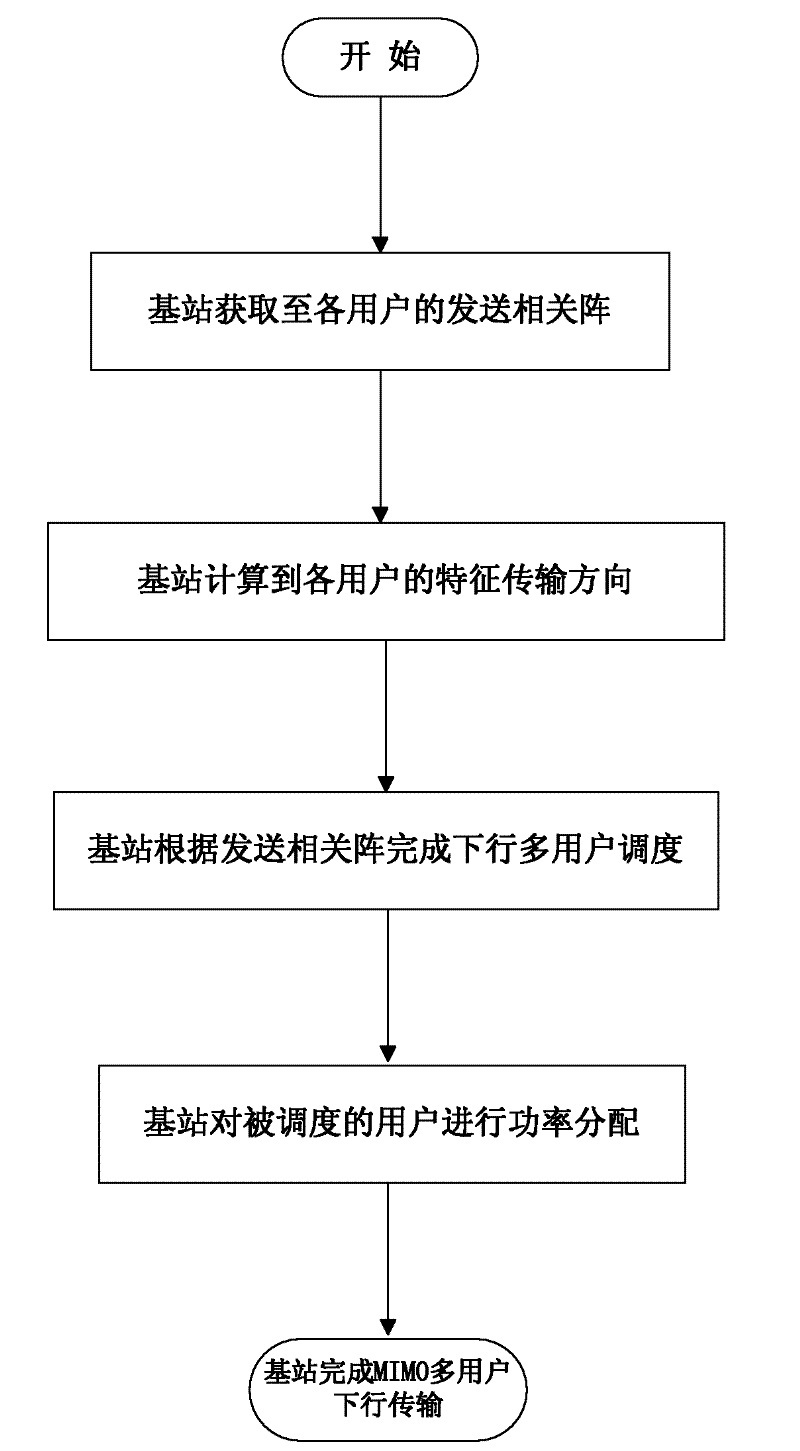Signal-to-leakage-and-noise ratio (SLNR) rule statistic-based MIMO (Multiple Input Multiple Output) multi-user downlink transmission method
A technology of signal-to-leakage-to-noise ratio and transmission method, applied in baseband system components, shaping network in transmitter/receiver, preventing/detecting errors through diversity reception, etc., can solve the problem of MIMO multi-user downlink transmission technology. And other issues
- Summary
- Abstract
- Description
- Claims
- Application Information
AI Technical Summary
Problems solved by technology
Method used
Image
Examples
Embodiment Construction
[0051] In the present invention, the base station uses the channel estimation result to calculate the transmission correlation matrix of the channel matrix through feedback or implicit feedback. The base station schedules each user suitable for downlink transmission according to the transmission correlation matrix. Corresponding to different users, under the principle of maximizing the statistical signal-leakage-to-noise ratio, the transmission correlation matrix is used to calculate the characteristic transmission direction. At the same time, the base station performs power allocation on the data streams sent to each user according to the transmission correlation matrix. On this basis Complete the MIMO multi-user downlink transmission method. It mainly includes the following steps:
[0052] 1) The base station obtains the transmission correlation matrix of each user channel in the cell;
[0053] 2) The base station calculates the characteristic transmission direction of t...
PUM
 Login to View More
Login to View More Abstract
Description
Claims
Application Information
 Login to View More
Login to View More - R&D
- Intellectual Property
- Life Sciences
- Materials
- Tech Scout
- Unparalleled Data Quality
- Higher Quality Content
- 60% Fewer Hallucinations
Browse by: Latest US Patents, China's latest patents, Technical Efficacy Thesaurus, Application Domain, Technology Topic, Popular Technical Reports.
© 2025 PatSnap. All rights reserved.Legal|Privacy policy|Modern Slavery Act Transparency Statement|Sitemap|About US| Contact US: help@patsnap.com



